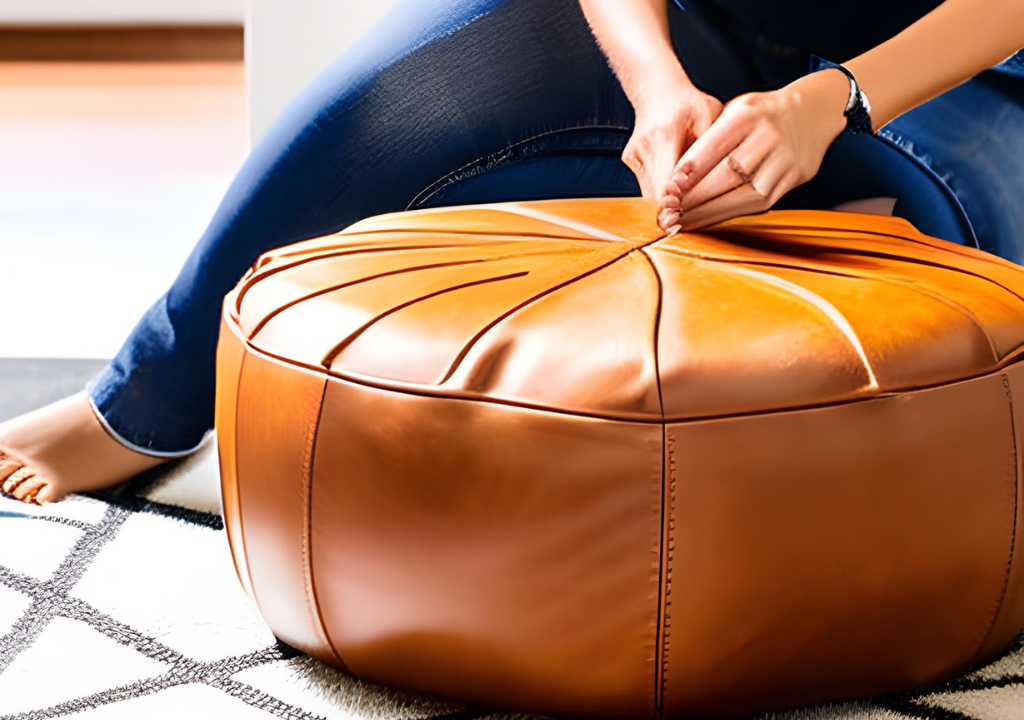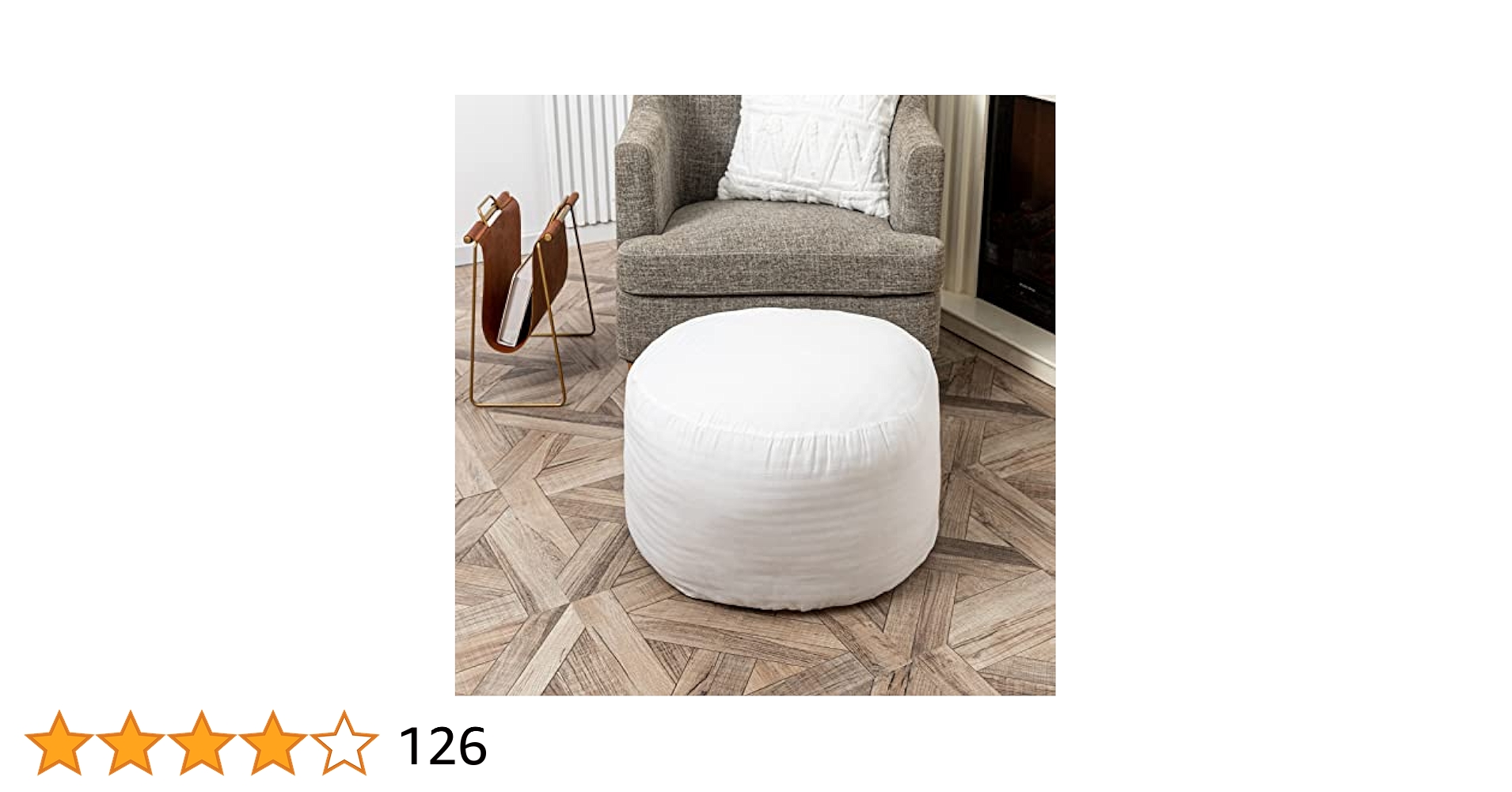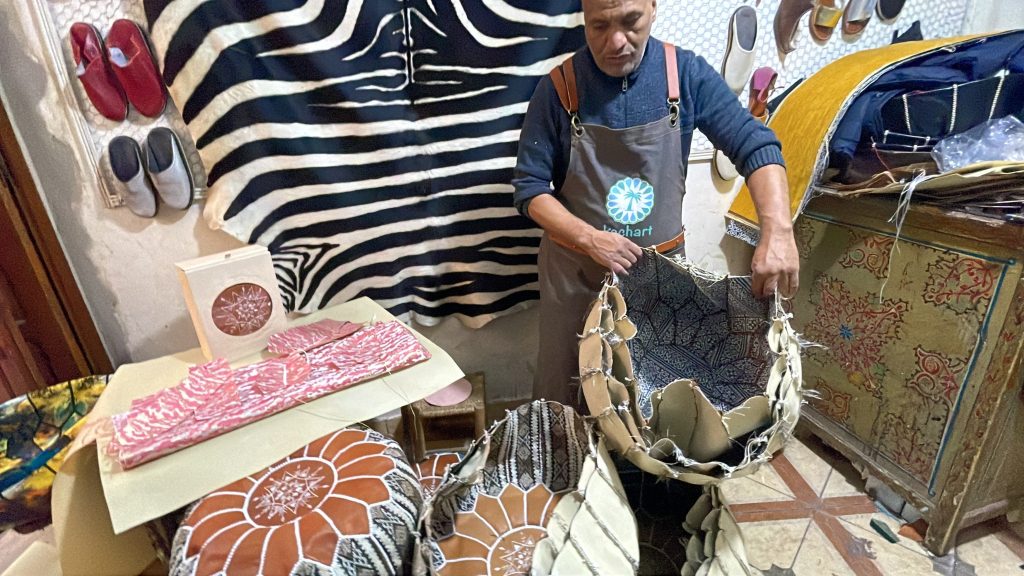Are you wondering what the best stuffing for a pouf is? Choosing the right filling can make all the difference in comfort, durability, and style.
Whether you want a pouf that’s soft and cozy or firm and supportive, the stuffing you pick matters. You’ll discover the top options for pouf stuffing, what makes each one special, and how to decide which one fits your needs perfectly.
Keep reading to find out how to make your pouf not just a beautiful addition, but also your favorite spot to relax.
Types Of Pouf Stuffing
Choosing the right stuffing for a pouf affects its comfort, shape, and durability. Different materials offer unique benefits. Some provide firm support, while others give a soft, cushy feel. Understanding the common types of pouf stuffing helps you pick the best option for your needs and style.
Foam Fillings
Foam is a popular choice for pouf stuffing. It offers firm support and keeps the pouf’s shape well. High-density foam lasts longer and feels solid under pressure. Memory foam adjusts to body shape, adding comfort. Foam fillings are lightweight and easy to handle. They work well for poufs used as footrests or extra seating.
Beads And Pellets
Beads and pellets give poufs a soft, flexible feel. These tiny balls move inside, allowing the pouf to mold to the body. Polystyrene beads are common and provide good support. They are lightweight and easy to refill. The downside is beads can compress over time and lose volume. They suit casual spaces and informal seating.
Natural Fibers
Natural fibers include cotton, wool, and kapok. These materials are eco-friendly and biodegradable. They offer a soft, plush feel but may compress faster than synthetic options. Natural fibers allow air circulation, keeping the pouf fresh. They fit well with rustic or boho decor. Regular fluffing keeps the pouf looking full.
Recycled Materials
Recycled stuffing is an eco-conscious choice. It uses materials like shredded foam, fabric scraps, or recycled plastic beads. These fillings reduce waste and lower environmental impact. Recycled stuffing can vary in firmness and texture. They often balance comfort with durability. Choosing recycled pouf stuffing supports sustainable living.

Credit: yarnandchai.com
Comfort Levels Of Different Stuffings
Choosing the right stuffing for a pouf affects comfort the most. Different materials offer unique feelings and support. Understanding these comfort levels helps pick the perfect stuffing for your needs.
Softness And Support
Soft stuffing gives a plush, cozy feel. Memory foam molds to your body for gentle support. Polyester fiberfill feels light and fluffy but less supportive. Bean bag filling moves easily, creating a flexible seat. Firmer stuffing like high-density foam holds shape and offers strong support.
Durability Over Time
Some stuffing keeps its shape longer. High-density foam resists flattening and lasts for years. Polyester fiberfill tends to clump and lose loft quickly. Bean bag beads can break down or leak. Natural fillings like cotton may compress and need frequent replacement.
Adjustability And Maintenance
Stuffing that can be added or removed allows easy comfort tuning. Bean bag beads and loose fiberfill work well here. Memory foam and dense foams are harder to adjust once packed. Maintenance varies; some stuffing can be washed, while others need spot cleaning. Choosing stuffing that fits your lifestyle saves time and effort.
Health And Safety Considerations
Health and safety are key when choosing stuffing for a pouf. The right materials protect users from allergies, toxins, and fire hazards. Careful selection ensures comfort without risk. Understanding these factors helps create a safe, cozy space.
Hypoallergenic Options
Hypoallergenic stuffing reduces allergy risks. Materials like polyester fiberfill and shredded memory foam do not trap dust or mites. Natural fillings such as kapok or buckwheat hulls also offer low allergen potential. These choices keep the pouf safe for sensitive skin and respiratory health.
Non-toxic Materials
Non-toxic stuffing avoids harmful chemicals. Look for certifications that confirm safe, chemical-free content. Organic cotton and natural wool are good examples. Avoid foam with added flame retardants or synthetic fillers that release fumes. Safe stuffing supports indoor air quality and family health.
Fire Resistance
Fire-resistant stuffing improves safety in the home. Some natural fibers like wool resist flames naturally. Synthetic materials may include fire-retardant treatments. Check product labels for fire safety standards. Proper stuffing slows fire spread and reduces injury risk.

Credit: medium.com
Environmental Impact
Understanding the environmental impact of your pouf stuffing choice is crucial. Every material has a footprint that affects the planet differently. Thinking about sustainability helps you make smarter decisions that benefit both your home and the environment.
Sustainability Of Stuffing Materials
Not all stuffing materials are created equal when it comes to sustainability. Natural fillings like wool, cotton, or kapok come from renewable sources and often require less energy to produce. Synthetic options such as polyester foam rely on fossil fuels and contribute more to pollution.
Choosing a stuffing that lasts long reduces waste over time. Have you considered how often you might replace your pouf because the stuffing wears out? Opting for durable, sustainable materials can save resources and money in the long run.
Biodegradable Choices
Biodegradable stuffing breaks down naturally without harming the environment. Materials like organic cotton, wool, and coconut coir return to the soil, unlike plastic-based fibers that linger for decades. This means your pouf stuffing won’t add to landfill problems once it’s time to dispose of it.
Imagine your old pouf stuffing nourishing a garden instead of filling a trash heap. Wouldn’t that make you feel better about your purchase? Biodegradable options offer peace of mind by closing the loop on waste.
Recycling And Reusability
Recycling stuffing materials reduces demand for new resources. Some polyester fillings are made from recycled plastic bottles, turning waste into comfort. Additionally, reusable stuffing can be taken out, cleaned, and refilled, extending the life of your pouf.
Have you ever thought about what happens to your pouf’s stuffing after use? Prioritizing recyclable or reusable options helps you minimize environmental harm. It’s a simple yet effective way to keep your footprint light while enjoying your cozy pouf.
Cost And Availability
Choosing the right stuffing for a pouf involves considering cost and availability. The stuffing material affects the pouf’s comfort and durability. Understanding different options can help make an informed decision. Let’s explore budget-friendly choices, premium options, and where to purchase stuffing.
Budget-friendly Options
Many affordable stuffing materials can fill a pouf effectively. Recycled materials are a popular choice. They provide an eco-friendly option while being cost-effective. Old clothes, towels, or fabric scraps work well too. They offer a way to reuse items and save money. Bean bag filler is another economical option. It’s lightweight and provides a comfortable sitting experience.
Premium Choices
For a luxurious feel, consider premium stuffing materials. Memory foam provides excellent support and comfort. It’s more expensive but enhances the pouf’s quality. Polyester fiberfill is another high-end choice. It keeps the pouf fluffy and soft. Down feathers offer a plush experience. They are soft, durable, and high-quality. These materials cost more but elevate the comfort level significantly.
Where To Buy Stuffing
Stuffing materials are available at various places. Craft stores offer a wide range of options. They provide different materials for various needs. Online retailers also sell stuffing materials. They offer convenience and a broader selection. Thrift stores can be a resource for recycled materials. They provide affordable options for budget-conscious buyers. Consider local fabric stores too. They might have sales or deals on stuffing materials.
Tips For Choosing The Right Stuffing
Choosing the right stuffing for a pouf affects its comfort and durability. Consider the size, use, and your comfort preferences. These tips help pick stuffing that fits your needs and space perfectly.
Matching Stuffing To Pouf Size
Large poufs need stuffing that keeps shape well. Firmer materials like foam or dense polyester fill work best. Small poufs can use softer stuffing like cotton or shredded foam. The right amount of stuffing avoids sagging or overfilling.
Considering Usage And Location
Think about how often the pouf will be used. For daily use, choose durable stuffing that holds up to pressure. Outdoor poufs need stuffing that resists moisture and dries quickly. Indoor poufs can have softer, plush stuffing for comfort.
Personal Comfort Preferences
Some like firm poufs for support. Others prefer soft and squishy for relaxation. Test different stuffing types if possible. Choose what feels best for sitting or resting your feet.

Credit: www.amazon.ca
Frequently Asked Questions
What Materials Make The Best Pouf Stuffing?
The best pouf stuffing includes memory foam, polyester fiberfill, and shredded foam. These materials provide comfort, durability, and shape retention. Polyester fiberfill is soft and affordable. Memory foam offers excellent support. Shredded foam ensures a customizable fill level for your pouf.
How Does Polyester Fiberfill Compare To Foam?
Polyester fiberfill is lightweight, soft, and inexpensive. Foam stuffing offers firmer support and better shape retention. Fiberfill is ideal for decorative poufs, while foam suits functional seating. Both materials are easy to maintain and widely available, making them popular choices for pouf stuffing.
Can Natural Materials Be Used For Pouf Stuffing?
Yes, natural materials like cotton, wool, and buckwheat hulls can be used. They are eco-friendly and breathable but may compress quickly. Natural stuffing offers a unique feel and sustainability benefits. However, synthetic options often provide better durability and comfort for everyday use.
What Is The Most Durable Stuffing For Poufs?
High-density foam is the most durable stuffing for poufs. It resists flattening and maintains shape over time. This material supports weight well and provides long-lasting comfort. Choosing high-density foam ensures your pouf stays comfortable and looks good for years.
Conclusion
Choosing the best stuffing for a pouf depends on comfort and durability. Foam offers good support and shape. Polyester fiber fills are soft and light. Beans or beads give a flexible feel. Consider your pouf’s use and where you place it.
A well-stuffed pouf lasts longer and feels better. Pick the stuffing that fits your needs and budget. Enjoy your cozy and stylish pouf every day.





